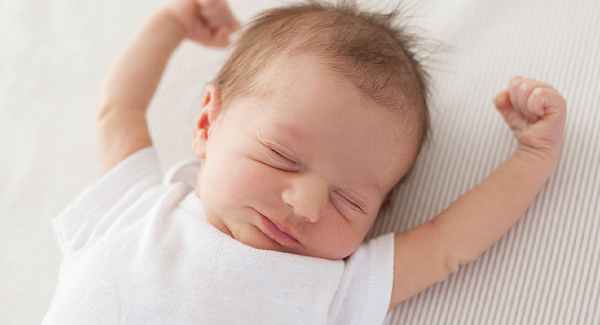Babies have some incredible skills right from the start, even before they are born. And babies are full of surprises which sometimes make the new parents laugh. Sure, they are absolutely adorable but that’s not the only thing they have going for them. Read on to see some amazing and weird newborn facts.
- Newborn babies do not cry
Babies howl and scream for what they want or need, but they do not produce tears when they cry. That’s because their tear glands and ducts are not entirely developed until about 2-3 weeks after birth. They do produce enough moisture to keep the eyes healthy and it may leak if the tear duct is blocked, this can happen even when the baby is not crying but they won’t shed proper tears for several weeks. If you feel that your baby’s eyes are often filled with tears, consult a pediatrician. Although it is not usually serious, there are a few exercises the doctor will guide you with to help the excess moisture drain and keep the baby more comfortable.

Some kids do not drop their first tear until four or five months. That’s unusual and again a doctor should be consulted if the baby doesn’t shed tears after one month of age.
- Babies explore with their mouths
Babies use their sense of touch to explore what is around them, with the most sensitive touch receptors being in and around their mouth. The mouth area is very sensitive, which is why they put everything in their mouth.

Babies start reaching for and grabbing objects around the age of 3 to 5 months and this is followed by putting the objects directly in their mouths.
- Babies are sleepy all the time
Babies feel sleepy all the time. In the first week of life, babies may sleep for as many as 20 out of 24 hours. A baby’s brain can use up to 60% of the total glucose supply, which can explain why babies need so much sleep.

The sleep requirement decreases with age and by one year it almost halves to about 11 hours.
- Babies have numerous reflexes
Babies have many known reflexes, which are primitive and due to evolution. A couple of examples are as follows: If you support your child upright with his feet on the flat surface, then his legs will work with a stepping motion. He cannot walk now, but is born with the knowledge of how to walk.

And have you noticed that babies startle a lot? That’s your baby’s Moro reflex. It’s a baby’s natural response to the loud noise or a feeling of falling. It makes the child fling his arms up and out, draw his knees up and open his fists wide before going to his original position.
- No kneecaps
Babies are born without kneecaps. Yes, you read that right. Babies have a structure of cartilage that resembles the kneecaps. These cartilages do not develop until they are fully six months old. And that’s the reason most babies crawl on their arms instead of on all fours. In fact, babies can crawl as soon as they are born.

The Karolinska Institute in Sweden found that when the baby was dried and laid on the mother’s chest for feeding, he could find her chest within an hour. And this is what has made breast crawl popular throughout the world as one of the ways to give newborns the best start to life. The WHO and UNICEF recommend all babies (without complications) should have access to immediate skin to skin contact following vaginal or cesarean birth if maternal condition permits so that they may be able to breast crawl.
- Babies have 300 bones
Unlike adults, babies are born with 300 bones, which is almost 50% more. The bones fuse together during growth that makes it 206.
For example, the skull of the baby has several bones that overlap one another during the birth to help the baby squeeze out. Babies also have a very soft spot on the head called the fontanelle. Before the skull grows completely, it is just a squishy and sensitive area.
- Newborns hear, smell, and see as good as us
A newborn can hear as well as an adult. They startle at just about anything, not because it’s softer or louder, but because it’s new. He can recognize his mother’s voice from just one syllable. It activates an area of the brain associated with language processing. An astonishing fact is that the newborns can recognize their mother’s voice at birth itself. When the baby is born, his hearing power is not 100% up to par as the middle ear is still full of fluid, which somewhat impairs the hearing. The only sound that they can recognize is their mother’s voice.

Even the sense of smelling is elevated at this stage. But the eyesight is not very brilliant. Newborn babies are nearsighted. Their vision allows them to see objects and people clearest when they are 8 to 12 inches away. That’s because the brain cannot process information very well at this stage. The brains start processing information at about 8 to 15 inches of range. Their brains contain around 100 billion neurons, which is why they notice everything. It takes a few weeks for the infants to distinguish visually between his/her mother and other adults.
- Your baby becomes socially responsive as early as 6 weeks
Babies are capable of their first real smile only when they are about six weeks old. You can try to engage him with funny voices and faces to see if they are ready. If you are unsure about the smile, then you can repeat the gag if required.

What about those ultrasounds which claimed to pick up baby smiles? Well these smiles are reflexes and they persist even after birth but the actual social smile is observed only after six weeks of age.


